Have you ever witnessed an actor’s performance that blurs the line between acting and real life, one where directing actors seems effortless?
You feel the characters’ loss, joy, and struggles as if they were your own.
Is it the actors’ talent, directors with an impeccable sense for scenes, or a stroke of luck?
It’s about knowing how to give your actors everything they need to perform.
Directing actors is a craft that can be learned and we’re going to show you how to get stellar performances from your cast.
In this article, you will learn:
- The essence of good directing for actors
- How to move beyond result-oriented directing and its limitations
- Proven tools that will enhance performances and help you get the best from your actors
Our goal is simple: to teach you techniques that will transform your script into a living, breathing moment on screen, scene by scene.
The tools we’ll discuss are designed to save you years of painful learning from your own mistakes.
Let’s start by embracing a philosophy that might seem counterintuitive.
01 Embrace Directing Actors’ Dichotomy
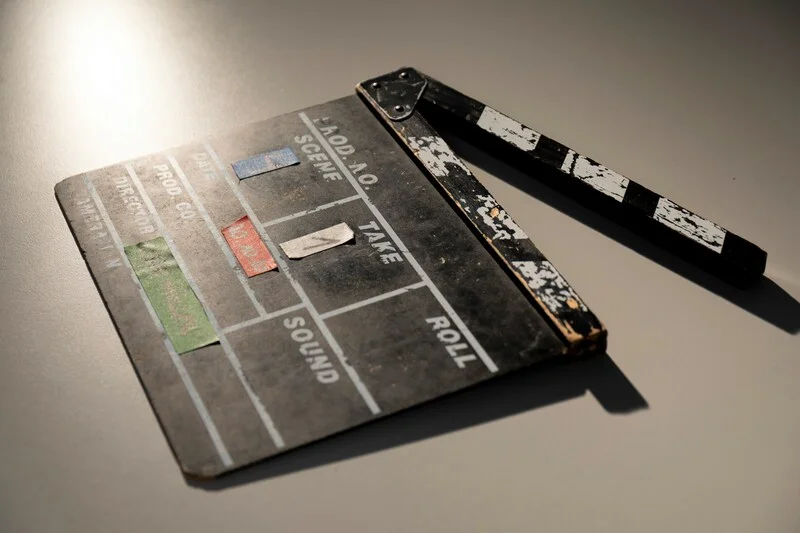

As with many things in life, directing is about dichotomy.
You come to the set with the story you want to tell, unaware that there are many hidden layers behind it.
This dichotomy is not about compromising your story, but enriching it.
“Great,” you might say, “but I have a vision for my film and I don’t want to jeopardize it.”
And let’s face it.
When you write the script, YOU know how it should look, right?
Camera movements, cuts between scenes, editing, music, and…
… what actors do.
In other words – how they are Acting.
With a capital A.
If you find yourself in this description, as I often do although I’ve been directing actors for seven years, that means you plan to direct with the result in mind, and drop out the gold in between.
Recognising this dichotomy leads us to question the limitations of result-oriented directing.
02 Avoid Result Oriented Directing
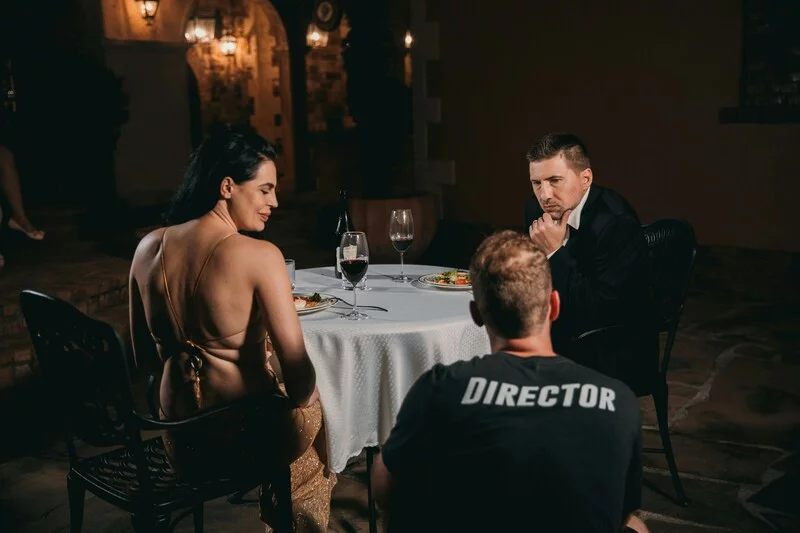

“Chloe storms into the kitchen and she’s reeeeally angry because he cheated on her. She’s hurt and she lets him know that he’s a bad man. After the fight you feel even more devastated.”
This is the way 80% of directors describe the scene to the actors before the camera rolls.
It’s called result directing and in some cases it works. In most cases viewers will see it as a cliche (It’s the “How could you do that to me?!!!” thing).
What’s wrong with it?
Although it sometimes looks tempting to use it anyway, avoid it.
The Pitfalls of Result-Oriented Directing
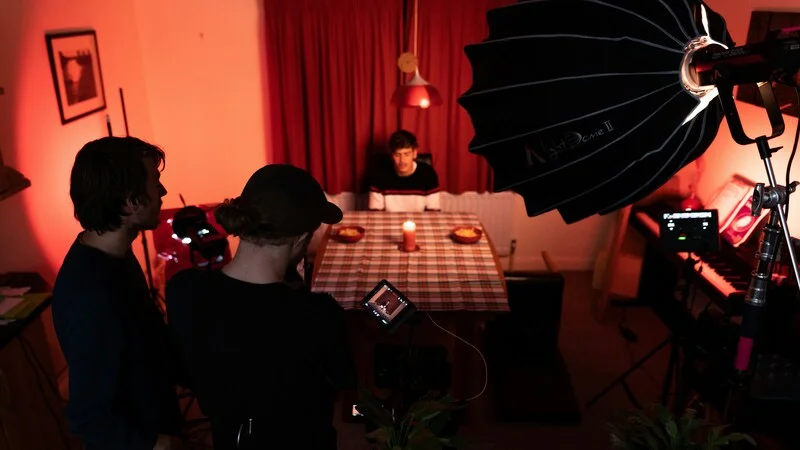

By telling your actors how they should feel you’re missing out the core of acting – authenticity.
Just as in life, authenticity comes as a result of our personality, situations and decisions we make.
And that’s why before you proclaim magical words “Action!”, our actress playing Chloe will be, intentionally or unintentionally, asking herself these questions:
”What makes most of me “being angry”? Being cheated or the way he tried to hide it?”
“Or perhaps it’s the way he tried to justify himself ?!? We played that well in the previous scene”
“How does she let him know she’s hurt? “
“Should I walk nervously or just stand still? Or perhaps move my hands? “
“Should I storm in – walk fast, run, or just give him a bad look?”
“In what way does ‘more devastated’ manifest? To what extent was I devastated when I entered the room?”
“Should I play this as if we are about to break up?”
This scene might not be about being angry at all. It might be about being hurt and humiliated.
Can you see the glimpses of the richness actress can bring to this performance apart from just “being angry” after answering these questions?
Embracing Authenticity for Directing Actors
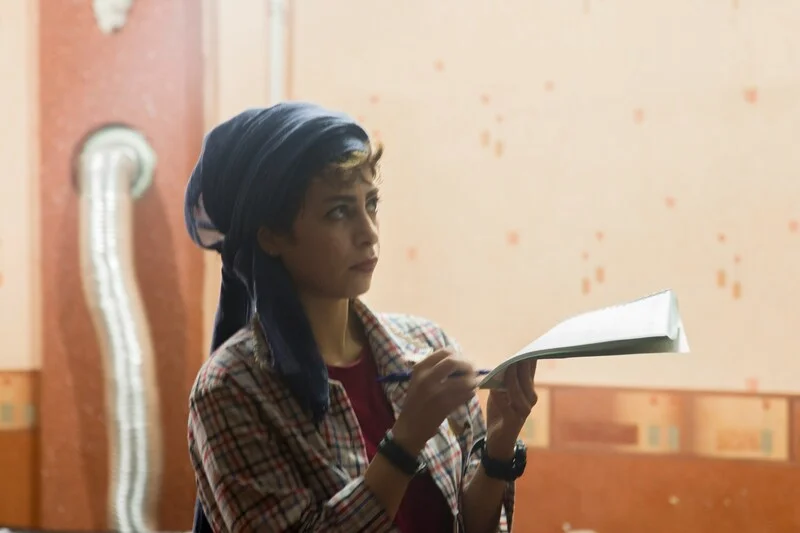

Shifting from a results-oriented approach to a process-focused mindset can transform the directing experience. It allows actors to explore and experiment.
This means giving your actors permission to make mistakes, which can lead to more authentic and spontaneous performances in front of the camera.
Dichotomy lies in the fact that although you give your actors freedom you are also guarding them from going into the wrong direction or dealing with things that are not important.
If this sounds good but feels overwhelming, don’t worry, we’re going to learn to direct actors step by step.
We’re going to give our actress playing Chloe everything she needs.
For the start, we need to return to the basics.
03 Analyze the Script
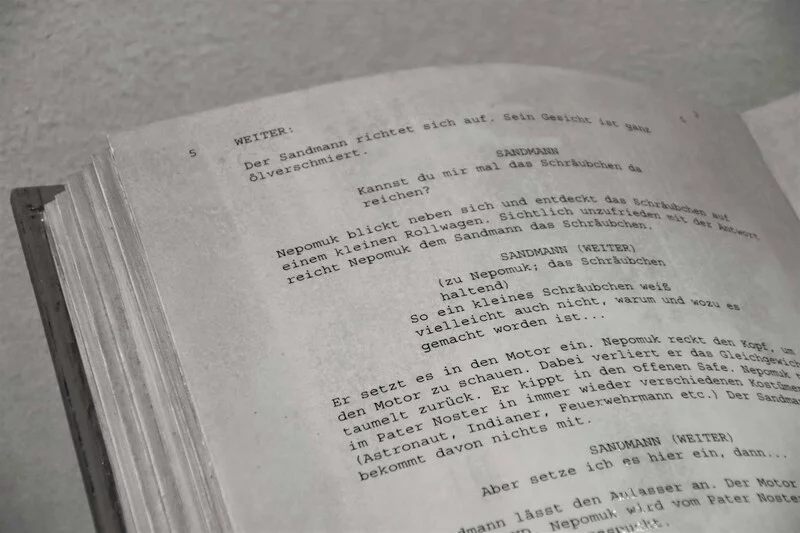

A thorough script analysis can reveal layers and nuances that even directors might overlook.
As a director, I’ve often encountered situations where actors revealed something I wasn’t even aware I wrote. They would literally point it out as a fact in the script.
So, how do you approach it?
Investigate the Script


Imagine you arrive at the crime scene.
Do you alter it? Place the clues as you please? Or do you try to figure out what really happened?
It’s the same with your script.
Treat it with respect, even if it’s not perfect.
Focus on the scene
Let’s imagine that Jeff’s infidelity was revealed to Chloe by her best friend. The night before finding out about cheating, Chloe spent the night with Jeff and sensed something was wrong.
Now we have something to present to our actress by reminding her what happened before.
05 Learn ‘Actors’ Language’
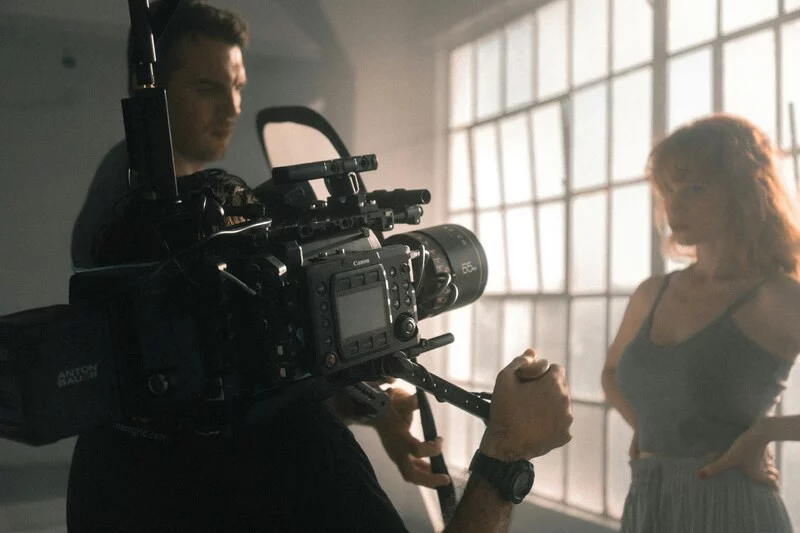

This doesn’t mean learning industry jargon.
Actors are not mere puppets to be moved around a stage or set; they are creative partners who bring depth and life to a character.
So, the first thing we’ll do is remind our actress of the previous scene in the script.
Present the facts


In our case you’d say something like:
“This scene happens the day after Chloe’s best friend told her he was cheating on her. Day before she spent a night with him and he didn’t say anything.”
Now, this gives our actress concrete facts:
– she found about it a day before from her friend
– her boyfriend didn’t tell her about it although he had a chance
The best part about presenting the facts?
It opens the door to a goldmine of info for playing the characters.
For example, what your actress might ask is if Chloe slept with her boyfriend that night.
Being OK with having sex with Chloe and seeing somebody else at the same time will impact the way Chloe confronts Jeff.
Further, instead of telling our actress to “be angry” (result oriented directing) describe the situation by using the word “imagine”
Use Images for Directing Actors


“Imagine you’ve discovered a betrayal by someone you trusted implicitly. You pictured growing old together with Jeff and having grandkids.”
Can you see how this raises stakes for our Chloe?
She probably wouldn’t feel this way if she was having second thoughts about being with him in the long run.
Don’t instruct your actors how they should feel, use images instead.
“Should I play this as if we are about to break up?” is another important question.
This reveals crucial info you need to provide as a director – character’s objective.
Define character’s objective


What does Chloe want from Jeff? What is her goal for our kitchen scene?
Wanting to break up or to stay together isn’t important for this scene.
Do not confuse objective with result.
Objective focuses on the sub-world, something that’s not being said.
For our scene in the kitchen it could be that Chloe wants Jeff to look her directly in the eyes.
This also opens space for instructions for the actor playing Jeff. His task might be to avoid looking Chloe directly in her eyes.
After this, actors often ask about the camera’s position and to block the scene for them.
Physical task


Actors like physical tasks and props – it gives them something to do in a scene and it brings them closer to “real” life.
When is our kitchen talk taking place – weekday, weekend, morning, evening?
Let’s presume you task the actress playing Chloe to go with preparing the food for dinner.
How she interacts with objects in the kitchen reflects her internal mindset.
This also naturally opens doors to instructions for the actor playing Jeff.
Is he trying to help her, sits at the kitchen desk, walks around the table or you’ll instruct him to stand still like he’s on trial?
And speaking about trials, metaphor is one of the weapons you can use to guide your actors.
Use Metaphors for Directing Actors


While directing one short I found myself stuck with a scene where two characters competing for the same job, briefly meet in the cafeteria.
It should have been a great and short intro for their conflict that will come a couple of scenes later.
I also thought it would take 30 min max to shoot.
Instead, it felt fake and we were filming it for an hour without getting anything.
I called a short break.
One of my colleagues was visiting the set and, sensing I was in trouble, pulled me aside.
“Do you know what this scene is about? It’s as if two gunslingers from westerns assess each other before a duel.“
I literally repeated his instructions to actores without adding anything else.
They nailed it in the first take.
That metaphor was all it took for my actors to get it right.
“As if” is a great way to put your actors in the mood but also give a fresh edge to their perspective.
Actors can draw from metaphors and incorporate it into their physical world as well.
Anthony Hopkins modelled some of the reactions for the role of Hannibal Lecter intelligent and ruthless serial killer from the Silence of the Lambs after lizard.
It’s most visible in his tongue movement and the fact that he almost never blinks. Both of these feel strange and discomforting, adding to the depth of the role.
Another tool that will help with being in the moment is the character’s background story.
Add Background Story to Character


Experiences we had in our lives shape our current and future decisions.
It’s the same for the characters actors play.
What if Chloe’s mother went through a painful divorce and Chloe witnessed it as a child?
How would that influence the scene that is about to unfold in the kitchen?
It would probably add additional weight to her every decision and reaction.
The next one is a simple tool that is extremely helpful when you feel stuck.
Use Opposites for Directing Actors
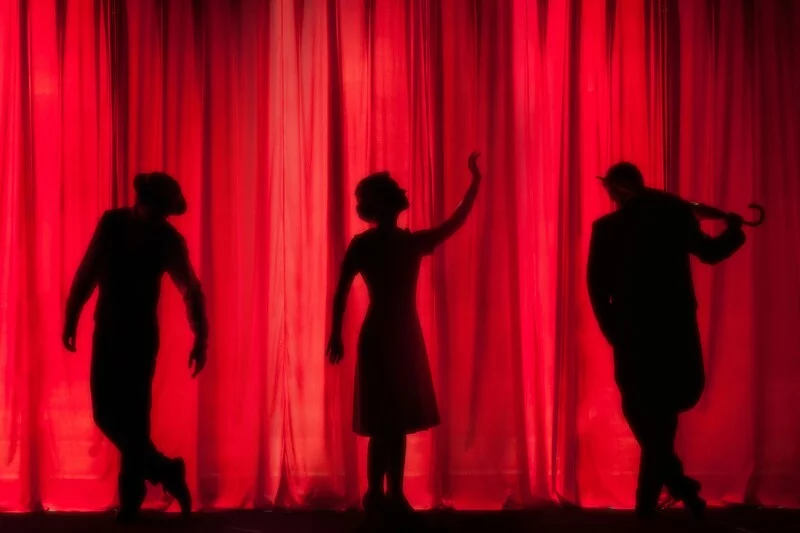

Experimenting with the opposite can add unexpected richness not only to background stories, but also characters’ personalities through flaws, gestures etc.
In the scene we described between Chloe and Jeff most people would describe Chloe as “good” and Jeff as “bad”.
But imagine that a year ago Chloe had a brief affair with her coworker and never confessed it to Jeff.
How righteous would she feel to cast blame on Jeff?
How would she approach their talk?
You can expand this to character’s personality as well.
Think of ruthless psychopath gangsters who cannot stand to see blood.
Powerful CEO who’s been feared by all employees but is totally subordinated by his wife at home.
However, we don’t always let other people know of our weaknesses or events.
Find a Secret


When Al Pacino worked on his role of detective Vincent Hanna in the film Heat, he and director Michael Mann came up with a dark secret never explicitly shown in the film – Hanna was a recreational cocaine user.
Not knowing it doesn’t take anything from Pacino’s great performance but it explains some of his small gestures.
Secret known only to your actor and you can help actors to figure out how to react in certain scenes and give your actors “why” and “how” when it comes to reacting to other actors.
And when it comes to reacting, reminding your actors that listening and reacting is the backbone of acting is something you can’t go wrong with.
Encourage Your Actors to Listen and React


An old film saying says you can spot good actors in scenes when they’re doing nothing. It’s true.
Listening and reacting is the tool I use most frequently when working with actors for three reasons:
01 Since actors play the same scenes a couple of times it’s easy to slip into the routine of being on autopilot
02 Reacting to other actors in a genuine manner helps other actors to perform better. The best actors react to other actors even if they aren’t in the shot, to help their colleagues
03 In most cases it will trigger actors to react differently in each take as active listening brings authentic reactions.
Implementing Directing Actors Tools
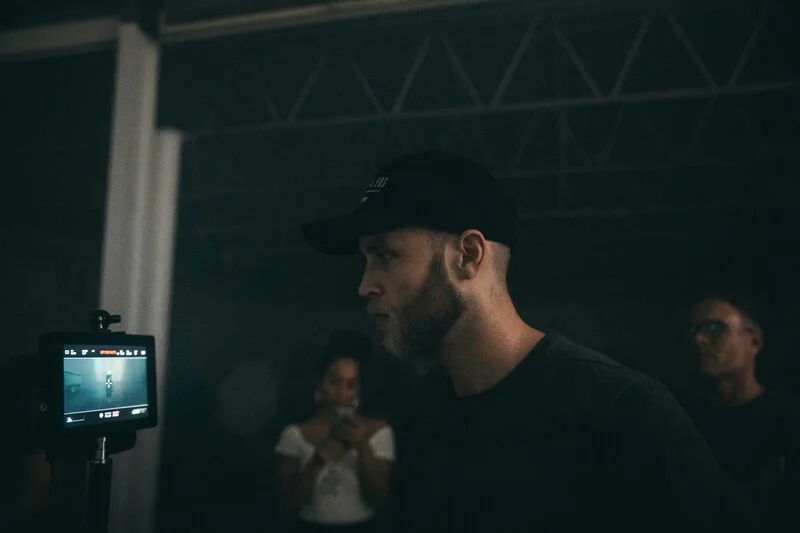

Let’s head back to Chloe and Jeff and our kitchen scene.
Instead of result directing, we’re going to apply tools we learned and go for the performance in the moment.
“Chloe walks in the kitchen after being told Jeff was cheating on her. She found out about it a day before from her friend. Jeff didn’t tell her about it although he had a chance (FACTS). This brings memories of her childhood and her father leaving Chloe and her mother (BACKGROUND STORY). Imagine being betrayed by someone you saw yourself growing old with (IMAGINE). Chloe walks into the kitchen and tries to prepare the chicken salad (PHYSICAL TASK). She want’s Jeff to look at her and explain why he cheated on her (OBJECTIVE).“
Compare this with initial result oriented directing and notice key differences.
The second one gives open space for the actress playing Chloe to really BE Chloe, and not the typical “girl who got cheated by her boyfriend” poster girl.
Adjust Directing Actors Tools


How you’ll use directing actors’ tools depends on the situation and the actors you work with. Be careful not to overflow your cast with information.
You might want to present the facts and background first, see how they respond and based on their performance use additional tools if needed.
The key is that you set your actors to give their best. Dichotomy we discussed at the beginning makes sure you’re the captain of the ship steering it in the right direction.
Occasionally you will meet directors who get great performances by using result directing.
How do they pull it off?
They usually work with actors who translate their instruction with the help of the toolbox we discussed, often without knowing it.
Although all of these tools can be used on the set, the most productive way is to start using them in the rehearsals.
06 Rehearse the Scenes


Rehearsals are great – you’re not under pressure to shoot and you can experiment and find out the silver lining you’re missing.
Take more time for improvisation exercises, discussing character backstories, experimenting with different emotional tones, and doing technical preparation.
If you’re using actors’ real life experience be careful not to transform it into a therapist session which won’t be to any use to your actors and your film as well.
Adjust rehearsals to your and actors’s workflow but don’t forget the golden rule.
Rehearsal is not performance.
It’s the process of gathering information.
“This all sounds great, but what about non-professional actors, can I use those as well?”
07 Adjust Directing for Non-professional Actors and Children


If you’re directing non-professional actors and children, principles are the same, but your approach will require adjustments.
Patience, clear communication, and a supportive environment are key.
Direct Non-professional Actors By Using Their Life Experience
Unless you plan to train your non-professional actors for a longer period of time, to get the best from them, keep their role closest to who they are and what they do.
That is usually the reason why directors go for non-professional actors.
Use simple action verbs and adjustments.
E.g. Hug him as you would hug your husband.
For children, it’s important to make the process fun and engaging, keeping instructions brief and straightforward.
Turn Directing Actors Into Playground


Treat your child actors as professional actors. You’ll be surprised at the dedication and honesty you’ll get from them.
Keep your instructions simple and use examples from their lives for “as if” and “imagine” tools.
Huge factor to watch out for is children’s energy. You need to go where they are to effectively communicate. If they are playful, be playful.
And don’t forget that your time with kids is limited.
Besides limited working hours for kids required by law for each country, the fact is that children will get tired sooner.
Don’t waste time and prioritize scenes involving children over others when possible.
Conclusion
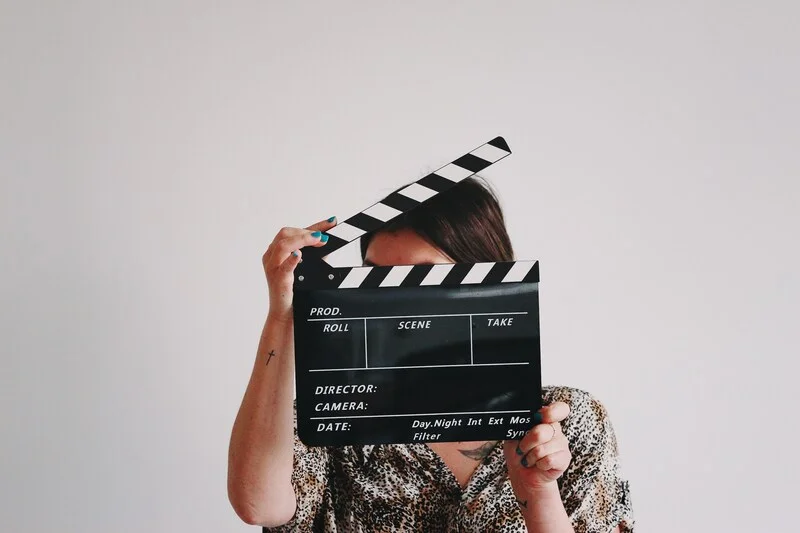

Directing actors is both a challenge and a privilege.
While it might be far from an ideal situation, I guarantee that using the tools we discussed will be a huge game changer for directing your actors and lead to better performances.
On many occasions it will be tempting to use result direction quick fix, but resist it.
If you’re embarking on your filmmaking journey use these techniques to direct your actors and let our HayotFilms team know how it went.
We are sure that the end result will be worth it. The flesh and blood characters your viewers can relate to will slowly emerge on the screen and connect the dots in your storytelling.
It’s the magic of acting and cinema.
Good luck!


